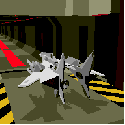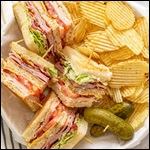|
Space Butler posted:I've read about harbour defence motor launches making some long runs, and apparently the things were used as escorts off Africa. Which must have been Interesting. I'm not sure they'd manage weeks though. HDMLs were used all over the world but they got there mostly as deck cargo on large merchant ships (having dimensions and weight to be carried this way was a stipulation of their design). Once at a base port they were mostly limited to voyages of a few days, a week, 10 days that sort of thing. They had a fuel range of over 2000 miles as standard, though, and could make trans-ocean voyages (such as UK to Malta) if they were fitted with long-range fuel and water tanks and crammed full of stores. Their accomodation was basic and cramped but fine for living in for a few weeks at sea on occasion and their seaworthiness was in far excess of their intended use. When HDMLs were built in US yards under Lend-Lease it was decided they were safer crossing the Atlantic under their own power and did so successfully. The voyage took 10-12 days depending on the weather.
|
|
|
|

|
| # ? Apr 23, 2024 07:07 |
|
Space Butler posted:I've read about harbour defence motor launches making some long runs, and apparently the things were used as escorts off Africa. Which must have been Interesting. I'm not sure they'd manage weeks though. A few HDMLs were given sails to extend their range to let them head across the Atlantic to the Caribbean, though iirc they never actually made the trip.
|
|
|
|
PT boats in the Pacific were generally transported to their station by larget ships, presumably due to the larger distances involved. PT-109, for example, was built at the Elco yards in New Jersey and fitted out in Brooklyn Navy Yard, then transferred to Norfolk, VA, where it was loaded onto a Liberty ship (SS Joseph Stanton). The boat was sent across the Pacific to New Caldedonia and fought in the Soloman Islands.
|
|
|
|
Solaris 2.0 posted:So Black Hitler has existed all this time I presume most of the thread is already familiar with Dr Gay Hitler. https://www.newspapers.com/clip/20018596/obituary-dr-gay-hitler-dentist/
|
|
|
|
The Waco CG-4 was a glider but it was mostly made of wood.
|
|
|
|
If you're into WWII Navy history, I blog a bit about USS Intrepid's Fighting Squadron 18. http://twoaday18.com/ I wrote the squadron's Wikipedia page and run a Facebook page on the unit as well.
|
|
|
|
German divers looking for fishing nets just came across an Enigma 
|
|
|
|
Randomcheese3 posted:A few HDMLs were given sails to extend their range to let them head across the Atlantic to the Caribbean, though iirc they never actually made the trip. I could have sworn I'd read about that actually being done to send a couple Fairmile motor gunboats to the Azores but I can't find the source again. Though in the 20s one US Navy submarine lost it's engines and sailed back to Hawaii by wind. https://en.wikipedia.org/wiki/USS_R-14_(SS-91)
|
|
|
|
C.M. Kruger posted:I could have sworn I'd read about that actually being done to send a couple Fairmile motor gunboats to the Azores but I can't find the source again. haha nice
|
|
|
|
I think someone actually did a write up of it in this thread. Speaking of, the first 2 or so posts in the next thread should have links to all the best effort posts of the previous thread
|
|
|
|
Milo and POTUS posted:Speaking of, the first 2 or so posts in the next thread should have links to all the best effort posts of the previous thread Agreed. And people shouldn't be too modest and should suggest their own posts too. Post links to effort posts and your thread related blogs, I can save the links and send them to the op.
|
|
|
PeterCat posted:I feel like Peru was just playing Cold War madlibs in the 80s.
|
|
|
|
|
Milo and POTUS posted:I think someone actually did a write up of it in this thread. Seconded
|
|
|
|
Good luck finding all of them, there were many
|
|
|
|
my posts own
|
|
|
|
In the spirit of the military masters, I nominate all my achievements and demean everybody else's.
|
|
|
|
Slim Jim Pickens posted:On the whole, I would not say the Brits ever figured out a good system for conducting night bombing raids. The Americans probably had better survival rates in the day time, as escort fighters were available to help and operational losses (due to darkness) lessened. For a while, the British strategy for bombing was to just route bombers through one-by-one, making use of the limits of the German interception system. Basically, only a single bomber could be intercepted at a time, if all bombers flew through a small enough sector of the German radar network. So 1/10 bombers would definitely be lost to interception, while 9/10 were free to wander through. It worked until the Germans tightened up defenses and soon loss rates were like 50%. Miserable stuff, all statistics and death Once Mosquito pathfinders and H2S radar became standard later on, the Night Bombers could actually hit precision targets, which worked fairly well. The raids where they literally burned down German cities also "worked well", though this is basically saying "lay waste to a large enemy city and it affects the enemy negatively." If this actually met a reasonable cost/benefit analysis, I'd say it was only when precision bombing could be done at night that it made sense. Still, though, I can't argue with your gist. The night fighters of the Luftwaffe remained very effective **long** after most other functions were breaking down. There's some dismal statistic that a Bomber command bomber had only a 5% chance of encountering a German night fighter, but if it did, its chances of being shot down were 50-90% or similar (sorry, it is late.) Both the Allied day and night bomber fleets sometimes took so much damage they had to stop attacking. The Night bomber fleet especially. In the battle of Berlin, they lost something like 1,000 bombers in a several month campaign to destroy Berlin, which is more heavy bombers than the Germans built throughout WW2. SlothfulCobra posted:I've been trying to design spaceships for a story I'm writing, so learning about how real-world ships laid out their floorplans helps me figure out things. Especially when I'm trying to figure out the lower end of things for an underpowered group that only has access to some small, salvaged military ships or converted civilian vehicles. I guess as well as what sort of threats they would be able to take on. How much goes into these accommodations really depends. Sometimes, like the Short Sunderland and the B-36, accommodations were planned from the start. Earlier this year I read a book on the Ju 290, and because the 24 hour flights were happening in a converted cargo plane, the crews 1) outfitted the aircraft with reclining metal chairs up front for sleeping, and an entire kitchenette in the back. This was something they did at their airbase, though they did send notes and drawings back to Junkers. This was pretty nice all told, and it happened because the aircraft had huge amounts of unused space. Oh, one more that I know of: the Short Shackletons all had kitchens, and were apparently famous for their abilities to serve good food while on patrol. zoux posted:Invading Iraq was the goal of the hawks in the Bush administration from day one. There was apparently a pretty big rift between Rice and Powell, who wanted to stay out of it, and Cheney, Rumsfeld and Wolfowitz, who wanted to fully implement the Iraq Liberation Act and invade Iraq and depose Saddam Hussein. (The latter three were signatories to the charter of the Project for the New American Century, which was like the Neocon Manifesto). Anyway it wasn't looking like it was going to happen and then 9/11 occurred and they instantly seized upon that as a cassus belli against Iraq I'll also mention, as I always do, that the Iraq invasion was supposed to prove once and for all the power of free market libertarian economics, and in a real sense, this was to be a prototype for a new rationally efficient imperialism. This is one of the reasons the dumb dumbs at top were so hostile to "conventional invasion planning": because the one true way was supposed to replace such quaint Roman notions. There was also the issue of cost: the new imperialism had to be cost effective, and all of this pain-in-the-rear end contingency planning was gubbermint inefficiency at its finest. To sell the new imperialism to the public, it had to be cheap and the market was gonna provide the troops All of these ideas proved *spectacular* failures, of course
|
|
|
|
Nebakenezzer posted:I'll also mention, as I always do, that the Iraq invasion was supposed to prove once and for all the power of free market libertarian economics, and in a real sense, this was to be a prototype for a new rationally efficient imperialism. This is one of the reasons the dumb dumbs at top were so hostile to "conventional invasion planning": because the one true way was supposed to replace such quaint Roman notions. There was also the issue of cost: the new imperialism had to be cost effective, and all of this pain-in-the-rear end contingency planning was gubbermint inefficiency at its finest. To sell the new imperialism to the public, it had to be cheap and the market was gonna provide the troops Yes, they would welcome us with open arms and all the silver and grain of Sicily would make Athens unstoppable.
|
|
|
|
Nebakenezzer posted:How much goes into these accommodations really depends. Sometimes, like the Short Sunderland and the B-36, accommodations were planned from the start. Earlier this year I read a book on the Ju 290, and because the 24 hour flights were happening in a converted cargo plane, the crews 1) outfitted the aircraft with reclining metal chairs up front for sleeping, and an entire kitchenette in the back. This was something they did at their airbase, though they did send notes and drawings back to Junkers. This was pretty nice all told, and it happened because the aircraft had huge amounts of unused space. Oh, one more that I know of: the Short Shackletons all had kitchens, and were apparently famous for their abilities to serve good food while on patrol. Are you still talking about the Sunderlands here?
|
|
|
|
Did the PBY have any crew luxuries?
|
|
|
|
Catalinas with ice cream makers and showers ohhhhhhhh yeah (I am making a joke, I don't know if they actually had these)
|
|
|
|
Nebakenezzer posted:Oh, one more that I know of: the Short Shackletons all had kitchens, and were apparently famous for their abilities to serve good food while on patrol. https://www.youtube.com/watch?v=JZCemtcbZk8 Fancy sandwich and coffee at 3:35.
|
|
|
|
I didn't really provide any context to my previous post so here's an effort to do that. Fighting Squadron 18 (VF-18) served aboard the Essex-class carrier USS Intrepid (now a museum ship in NYC), conducting strike operations between 6 September – 25 November 1944. Their tour of duty aboard ship was cut short due to a kamikaze attack that put Intrepid out of action until 1945. However, members of the squadron were retained in theater and operated from USS Hancock into December before rotating back to the US for a well-deserved leave. According to statistics compiled by Barrett Tillman, VF-18 is ranked 4th among US carrier squadrons for credited victories. Looking at accomplishments/victories relative to length of combat tour, they may even rate higher. The squadron produced the Navy's second-ranking ace, Cecil Harris, who is credited with either 23 or 24 victories depending on who you ask. Tillman called him "arguably the most consistently exceptional fighter pilot in the US Navy," and J.S. McCain, Sr. said, in his strong recommendation of Harris for the Medal of Honor, that his "record shows him one of the truly outstanding naval aviators of this war." (Harris won the Navy Cross) The three squadrons which scored higher than VF-18 (VF-15, VF-9 and VF-2 respectively) all have at least Osprey titles written to commemorate their heroism and success. No book has been written about VF-18. The only article of decent length focusing specifically on the unit was written by one of its pilots, Charles deMoss, for The Hook Magazine. I attribute this lack of attention to a few factors. In the first place, one of the signal accomplishments of VF-18 pilots is typically not attributed to them. Carl Solberg's book "Decision and Dissent" credits the initial sighting report of Admiral Kurita's battleships on the morning of 24 October to Mort Eslick of Dive Bombing 18. In fact, the report was sent by Donald Watts of VF-18 and re-transmitted by W.H.B. Millar, also of VF-18. "Mort" Eslick (actually Mark Eslick), the skipper of VB-18, was KIA on 12 October. Max Adams was actually the VB-18 pilot with Watts. Another major factor is probably Cecil Harris's death on 2 December 1981, which is a rather sad story. It is genuinely difficult to talk about and it is hard to talk about Harris without broaching that subject. I also feel that the number of original squadron pilots killed in action, and the number of men killed in Navy service or as test pilots post-war, contributed to the lack of interest. It would have been harder in the heyday of researching and writing on this subject to compile information about VF-18 than the aforementioned squadrons, so they were left out of the conversation. On the bright side, many families of Fighting 18 alumni are interested in their service history. I've spoken with about a dozen families, from 97 year old siblings of squadron members to grandchildren. I also got to speak with Chuck deMoss before his passing, which was a blessing. It's been very heartening working with these families. They helped me piece together a lot of missing information about division assignments, strike rosters, friendships, etc. A few have donated materials to the Intrepid Museum for safekeeping. Oral histories exist at Intrepid and the Veteran's History Project, and elsewhere in snippets from American Fighter Aces Association meetups and digitized library holdings of wartime radio interviews. There really is a treasure trove of information out there but hunting it down and synthesizing it is, to put it lightly, a slog. I have been working on this project for more than five years now. But it's a labor of love. EDIT: I should mention that Solberg's small error continues to be repeated today since his book is otherwise excellent and he is rightly considered an authority on this subject. Most recently, Ian Toll's great "Twilight of the Gods" contained this error. Alligator Horse fucked around with this message at 05:39 on Dec 6, 2020 |
|
|
|
raverrn posted:Did the PBY have any crew luxuries? Sure, if you could afford them        
|
|
|
|
Forgive me if this is a bit off-topic, but what is a monograph? I'm reading what's supposed to be a monograph about the 1945 siege of Budapest, and it's not clear to me how it's supposed to be different from "a book". Alligator Horse posted:Fighting Squadron 18 (VF-18) served aboard the Essex-class carrier USS Intrepid (now a museum ship in NYC), conducting strike operations between 6 September – 25 November 1944. Thank you for this - I read a book about the Intrepid some years ago and this brought back some nice memories.
|
|
|
|
gradenko_2000 posted:Forgive me if this is a bit off-topic, but what is a monograph? A monograph is a specialist work by an expert in the subject matter, usually written on some particular aspect of a subject. So your author might have written a book or books about the Budapest Offensive, and then written a monograph specifically on the siege itself to go into further detail on that part of the campaign. The distinction is mostly academic, I think.
|
|
|
|
lol @ the part at the end where they are shot up by Bedouins
|
|
|
|
You know, with the imminent new Milhist thread, that brief derail about Space Battleship Yamato kind of makes me want to do a space battles thread over in Sci-Fi Wi-Fi.
|
|
|
|
Nebakenezzer posted:Once Mosquito pathfinders and H2S radar became standard later on, the Night Bombers could actually hit precision targets, which worked fairly well. The raids where they literally burned down German cities also "worked well", though this is basically saying "lay waste to a large enemy city and it affects the enemy negatively." If this actually met a reasonable cost/benefit analysis, I'd say it was only when precision bombing could be done at night that it made sense. Still, though, I can't argue with your gist. The night fighters of the Luftwaffe remained very effective **long** after most other functions were breaking down. There's some dismal statistic that a Bomber command bomber had only a 5% chance of encountering a German night fighter, but if it did, its chances of being shot down were 50-90% or similar (sorry, it is late.) I suppose the question becomes - what would have happened if the Allies had used the resources they spent on the strategic bombing campaign on battlefield bombing instead? Or just on more fighters to counter Germany's early-war dominance in the air?
|
|
|
|
Gort posted:I suppose the question becomes - what would have happened if the Allies had used the resources they spent on the strategic bombing campaign on battlefield bombing instead? Or just on more fighters to counter Germany's early-war dominance in the air? By the time such battlefield bombing was really relevant the allies outnumbered the axis in the air significantly, its not really practical to try and get more fighters up before the end of the battle of France, and the only land action the allies would fight before 1943's invasion of italy is the battle for North Africa in which the air advantage wasnt in the Axis' favour. We also then introduce the question of what happens if german industry doesnt get the hard hits it takes from strategic bombing during the invasion of Russia. E: I typed france when i meant russia. Polyakov fucked around with this message at 15:09 on Dec 6, 2020 |
|
|
|
Polyakov posted:By the time such battlefield bombing was really relevant the allies outnumbered the axis in the air significantly, its not really practical to try and get more fighters up before the end of the battle of France, and the only land action the allies would fight before 1943's invasion of italy is the battle for North Africa in which the air advantage wasnt in the Axis' favour. We also then introduce the question of what happens if german industry doesnt get the hard hits it takes from strategic bombing during the invasion of france. And if we're honest, the political problem of 3-4 years of not really doing anything to take the fight to Germany while getting ready for D-Day.
|
|
|
|
TooMuchAbstraction posted:PT boats aren't "weeks at a time", they're meant to operate from a nearby base and can't operate independently for long. I seem to recall that they occasionally got towed to operational areas by bigger boats with more endurance, because of their limited fuel storage. The USN's 110' subchasers had a crew of 30 and also escorted convoys; that's half the length of a Flower and a third of the crew. They were just big enough for a 3" gun (later swapped for a 40mm), a couple of 20mm, some depth charges and a basic radar and sonar kit. They didn't work the North Atlantic routes - too rough - but did cover a lot of convoys in more clement latitudes. You'd see them all over the place in the Med. Stafford's Suchaser tells SC-692's story from Florida to Sicily. https://smile.amazon.com/Subchaser-Bluejacket-Paperbacks-Edward-Stafford-ebook/dp/B009SC1RZ8 Also clocking in at 110' were the RN D-class MTB/MGBs, aka the "Dog Boats". Bigger and slower than the USN PT Boats (77'-80') these heavily armed boats usually did the typical coastal forces routine of patrolling at night and back to base by day. They could stay out longer, the D-boats did a lot of work along the Norwegian coastline, often tying up someplace secluded and putting up cammo netting for daytime. Dog Boats at War by Reynolds is showing at $2.99 on Kindle at this exact moment, https://smile.amazon.com/Dog-Boats-War-Leonard-Reynolds-ebook/dp/B01M581UBM that's a good read and well-illustrated covering operational use, design history, and technical details. Even at full price it's worth a read.
|
|
|
|
Polyakov posted:By the time such battlefield bombing was really relevant the allies outnumbered the axis in the air significantly, its not really practical to try and get more fighters up before the end of the battle of France, and the only land action the allies would fight before 1943's invasion of italy is the battle for North Africa in which the air advantage wasnt in the Axis' favour. We also then introduce the question of what happens if german industry doesnt get the hard hits it takes from strategic bombing during the invasion of france. One thing also to understand is that 'battlefield bombing' was very much in its infancy in ww2- the ability of airpower and land forces to coordinate was very limited and even the military organizations that were better at it were very much developing methodology on the fly to try and make it work. Generally, the expectation was more self-directed interdiction than actually providing meaningful support. I think the difficulty of making useful ground attacks on tactical targets in support of a land force is sometimes very much understated in a more video-game educated group of enthusiasts. It could be devastating when it happened, but the batting average for aircraft in a tactical role really getting it done in direct support of a combat operation was really low. Even the US, which actually did have pretty good liaisons and somewhat developed air-land coordination couldn't get the USAAF to actually bomb parallel to the front line rather than perpendicular to it.
|
|
|
|
get your posting in while you can; new page soon
|
|
|
|
Post.
|
|
|
|
 Yvonmukluk posted:You know, with the imminent new Milhist thread, that brief derail about Space Battleship Yamato kind of makes me want to do a space battles thread over in Sci-Fi Wi-Fi.  I’d be down for something like that. I’d be down for something like that.
|
|
|
|
fartknocker posted:
It is done!
|
|
|
|
gradenko_2000 posted:Forgive me if this is a bit off-topic, but what is a monograph? Memento posted:A monograph is a specialist work by an expert in the subject matter, usually written on some particular aspect of a subject. So your author might have written a book or books about the Budapest Offensive, and then written a monograph specifically on the siege itself to go into further detail on that part of the campaign. Specifically It's an academic book on a single topic by a single author as opposed to a book which is a collection of essays by various authors.
|
|
|
|
Panzeh posted:One thing also to understand is that 'battlefield bombing' was very much in its infancy in ww2- the ability of airpower and land forces to coordinate was very limited and even the military organizations that were better at it were very much developing methodology on the fly to try and make it work. Generally, the expectation was more self-directed interdiction than actually providing meaningful support. Uhhhh...Stuka says what. I mean thats what it was designed for. You may be overstating this.
|
|
|
|

|
| # ? Apr 23, 2024 07:07 |
|
Memento posted:Are you still talking about the Sunderlands here? No! While the Sunderlands flew post war, the Shackletons also had a kitchen.
|
|
|


















































